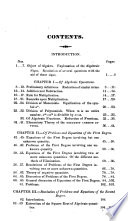 | Bourdon (M., Louis Pierre Marie) - 1831 - 446 pages
...the roots themselves, is equal to the coefficient of the second term taken with a contrary sign. 2d. The sum of the products of the roots taken two and two with their respective signs, is equal to the coefficient of the third term. 3d. The sum of the products... | |
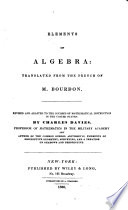 | Charles Davies - 1835 - 378 pages
...the roots themselves, is equal to the co-efficient of the second term taken with a contrary sign. 2d. The sum of the products of the roots taken two and two, with their respective signs, is equal to the co-efficient of the third term. The sum of the products... | |
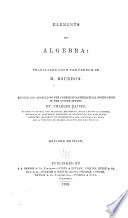 | 1838 - 372 pages
...the roots themselves, is equal to the co-efficient of the second term taken with a contrary sign. 2d. The sum of the products of the roots taken two and two, with their respective signs, is equal to the co-efficient of the third term. The sum of the products... | |
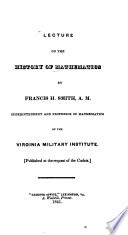 | Francis Henney Smith - 1841 - 46 pages
...successive formation of the co-efficients of an equation, from the comInflation of the sum of its roots, the sum of the products of the roots, taken two and two, three and three, &c. He appears to have been the first who understood the use of negative roots, and... | |
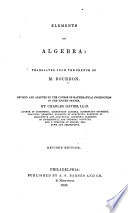 | Charles Davies - 1842 - 368 pages
...the roots themselves, is equal to the co-efficient of the second term taken with a contrary sign. 2d. The sum of the products of the roots taken two and two, with their respective signs, is equal to the co-efficient of the third term. The sum of the products... | |
 | Charles Davies - 1845 - 382 pages
...the roots themselves, is equal to the co-efficient of the second term taken with a contrary sign. 2d. The sum of the products of the roots taken two and two, with their respective signs, is equal to the co-efficient of the third term. 3d. The sum of the products... | |
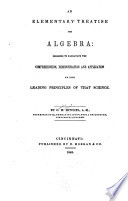 | Ormsby MacKnight Mitchel - 1845 - 308 pages
...d ..... &c ...... — /; or, the sum of the roots, with the contrary sign, Q,=ab+ac+ad+bc+bd+, &c.; the sum of the products of the roots, taken two and two, R= — abc-\-abd-\-, &c.; the sum of the products of the roots, taken three and three, with the contrary... | |
 | Elias Loomis - 1846 - 380 pages
...the sum of all the roots (1 + 2 + 3) with their signs changed. The coefficient of the third term is the sum of the products of the roots taken two and two; thus, 1x2+1X3 + 2X3. The last term k" the product of all the roots (1X2x3) with their signs changed.... | |
 | John Bonnycastle - 1848 - 334 pages
...second term is the sum of the roots with their signs changed. (2.) The coefficient of the third term is the sum of the products of the roots, taken two and two, with their signs changed. (3.) The coefficient of the fourth term is the sum of the products of the... | |
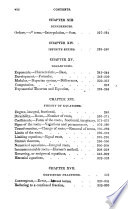 | Stephen Chase - 1849 - 348 pages
...the roots with their signs changed (§ 213. 3). (2.) The coefficient of the third term is equal to the sum of the products of the roots taken two and two (§ 213. 4); (3.) that of the fourth term, to the sum of their products taken three and three ; and... | |
| |